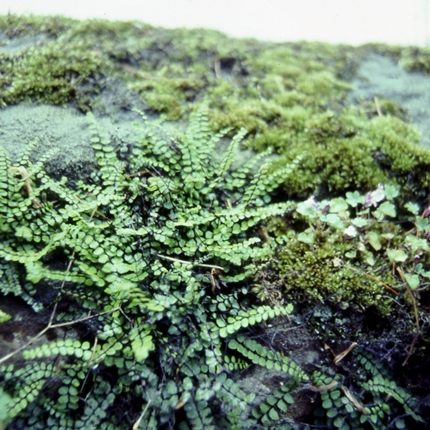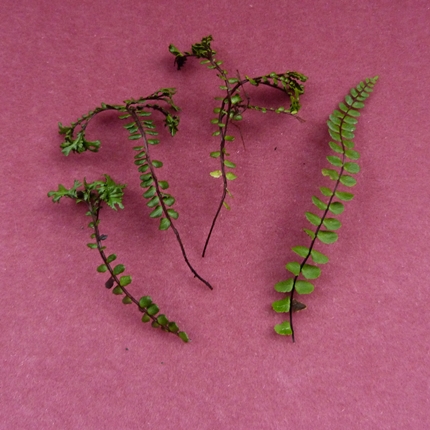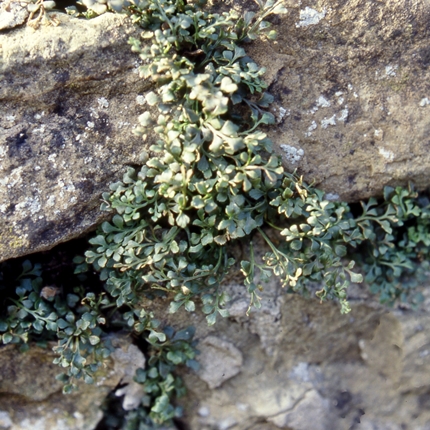Asplenium or the spleenworts.
This is one of the truly great genera, containing many wonderful garden plants The list given here has been largely limited to those readily available in nurseries. Most spleenworts are small plants of the type known to the gardener as alpine, wall, or rockery plants. The big exception to this is the British native, hart’s tongue fern, A. scolopendrium, whose large, strap-shaped leaves may seem to have little in common with the gem-like qualities of most Aspleniums, but the relationship is proved because it happily hybridizes with many of the others. See the harts tongue's own page (A. scolopendrium.). Most spleenworts are tough and easy to grow, though they do need good drainage and some grittiness to life. There are many other spleenworts more difficult in the garden than those listed, but well worth growing and all of delicate beauty. |

|
A. trichomanes AGM (E) maidenhair spleenwort Hight/Spread 20cm.
A good trough or rock garden fern. Most of the many subspecies, though not subsp. trichomanes, like lime-rich conditions and good drainage. In Britain it is often found growing on walls, where it looks like a shining green starfish. A truly reliable evergreen with pinnate fronds, round, bright green pinnae and black rachis; very pretty and a really first class garden fern, ideal for a rockery or trough garden, where it will sometimes grow larger that the hight given. |

|
Asplenium trichomanes ‘Grandiceps’, with a large crest on the tip of the frond, is interesting but to my mind not beautiful and does not seem to grow as large as the type. Three 'Grandiceps' fronds shown with one normal frond. |

|
A. ruta-muraria (E) wall rue Hight/spread 10cm.
Perhaps our commonest native wall fern, wall rue really does look very much like tufts of blue rue foliage growing out of the joints of old walls. I adore this little plant; it is so bright and cheerful looking, and grows so happily in the harshest of environments. It is the perfect patina of age on a new building, and brings the charm of new life to a romantic ruin. From the dry stone walls of the Pennines to the factory walls of the inner city, wherever mindless tidying does not take place, you will find wall rue. Regrettably it is really very difficult to establish on purpose in garden walls, and success comes, if ever, only after multiple attempts, perhaps best established from spore sow on site, very much a challenge. |

|
|